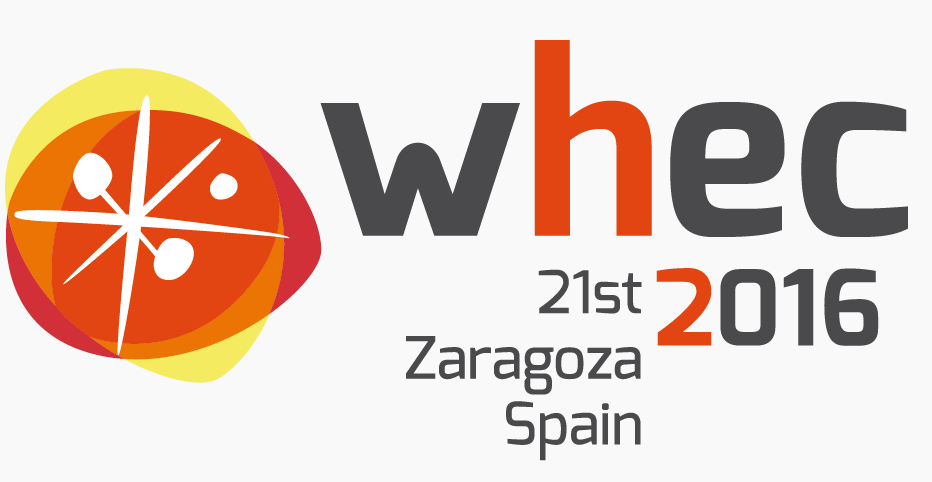AQUASEF project presentation at the 21st World Hydrogen Energy Conference, WHEC 2016
The world’s hydrogen and fuel cell community came together in Zaragoza, Spain, from the 13th to the 16th of June 2016, to take part in the World Hydrogen Energy Conference 2016 (WHEC 2016).
WHEC 2016 was attended by more than 900 participants from all over the world and offered high quality plenary sesisions, 600 scientific and technological presentations from 50 different countries, a Trade Fair, a Test&Drive zone, several parallel events and multiple networking areas and activities. The conference went over the past, present and future of the hydrogen energy sector worldwide, covering all the aspects related to hydrogen energy such as the progress in hydrogen production, storage, distribution and aplications, the latest hydrogen technologies for mobility or the hydrogen strategies developed by the sector leading regions of the globe, among other issues of interest.

In this context, the representative of ARIEMA Energía y Medioambiente, Mr. David Solera, gave a 15 minutes talk on the procedures followed in AQUASEF project for the demostration of the application of Hydrogen and fuel cells technologies in the aquaculture sector.
As it was mentioned, many aquaculture facilities have a problematic or even impossible connection to the grid, so energy generation usually is based on fossil fuels by using highly polluting and inefficient power generators. Furthermore, aquaculture facilities are sometimes highly dependent on oxygen supply by industrial gases companies: oxygen is frequently a necessary input to inject into the hatcheries (juvenile fish rearing tanks).
Mr. Solera highlighted that one of the most novel and innovative aspects of the project, because there is no previous work in the field of inland aquaculture, is the onsite self-production of oxygen by water electrolysis powered by renewable energies. The process of water electrolysis involves the dissociation of the water molecule (H2O) into its two basic components (hydrogen and oxygen) by applying electric current. The added value of using this technology in the aquaculture field is that both generated gases can be used, oxygen for supplying the hatcheries, and hydrogen for producing electricity, heat and/or mechanical work.
Hydrogen technologies are expected to experience a great growth in the coming years. The technology is currently at a stage of maturation and constant improvement, and it is about to reach economic competitiveness in the following years, when economies of scale result in equipment prices significantly lower. Typically after the electrolysis process, only hydrogen is recovered, stored and used, while oxygen is vented to the atmosphere. The demonstration of these technologies in sectors such as aquaculture, where both oxygen and hydrogen are valuable, represents a breakthrough on the large scale use of these technologies. The future deployment of hydrogen technologies in a wide range of applications, such as hydrogen vehicles, would improve even more the cost efficiency of medium scale electrolysis systems like those envisioned in this project.
Access to WHEC 2016 conference programme.
